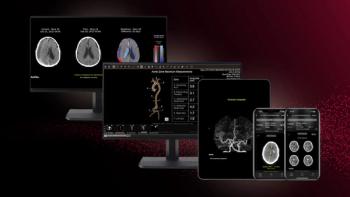
CT Angiography For Cerebral Aneurysms Smaller Than 3 mm
CT angiography can help clinicians detect cerebral aneurysms smaller than 3 mm.
CT angiography accurately detects small cerebral aneurysms smaller than 3 mm, according to a study published in
Researchers from China performed a retrospective study to assess the accuracy of CT angiography for the diagnosis of cerebral aneurysms that were 5 mm or smaller, using digital subtraction angiography (DSA) as a reference standard.
The study group included 1,366 patients who underwent both CT angiography and DSA. Two readers assessed CT performance for depiction of aneurysms, size, location, and status of rupture.
The results showed DSA detected 711 small aneurysms in 579 patients. Using DSA as the reference standard the researchers found:
The researchers noted that the sensitivities of CT angiography were lower for detection of aneurysms smaller than 3 mm and unruptured compared with aneurysms that were 3 to 5 mm and ruptured. There were no differences for the sensitivities of CT angiography for diagnosis of aneurysms in the anterior versus posterior circulation. Excellent or good interreader agreement was found for detection of intracranial aneurysms on a per-patient and per-aneurysm basis.
Newsletter
Stay at the forefront of radiology with the Diagnostic Imaging newsletter, delivering the latest news, clinical insights, and imaging advancements for today’s radiologists.




























